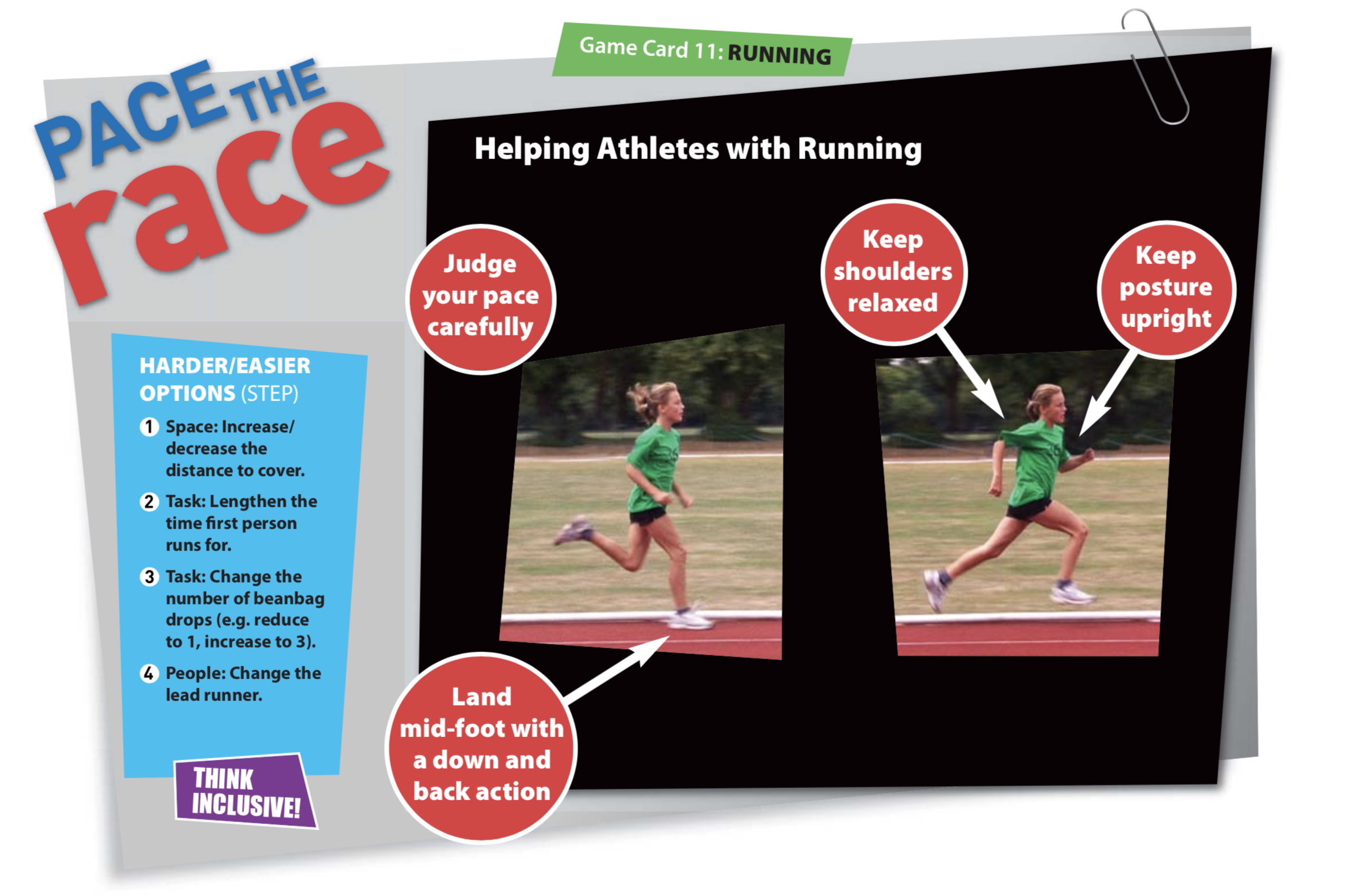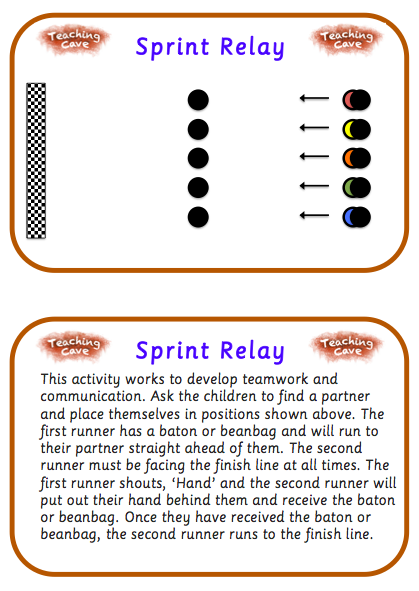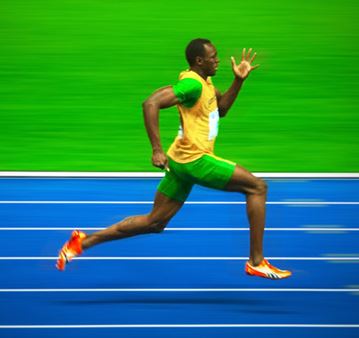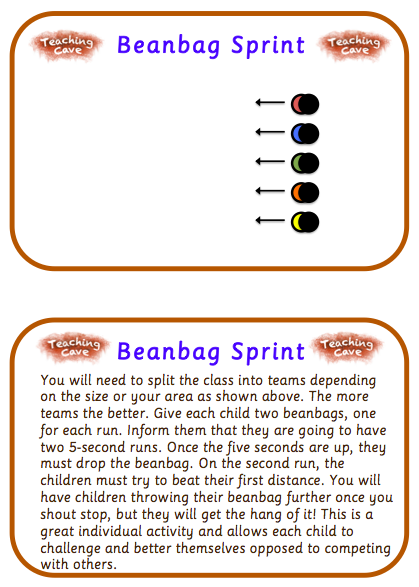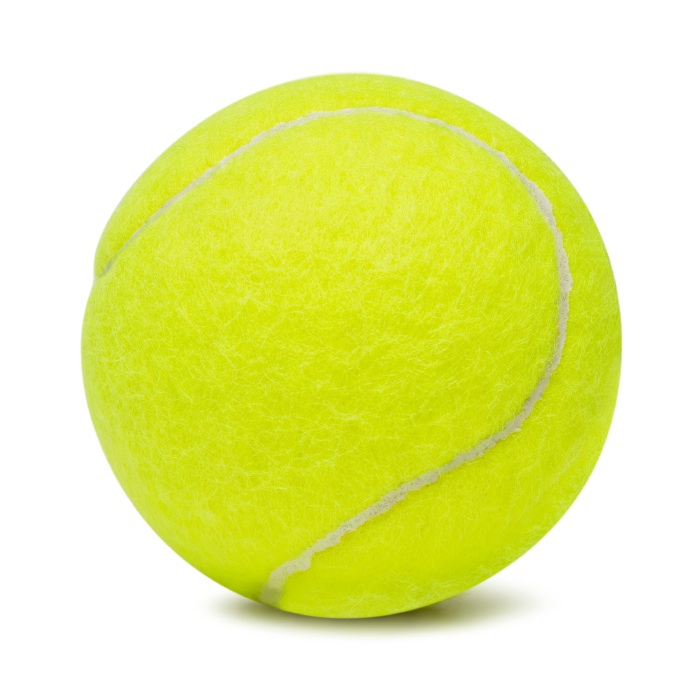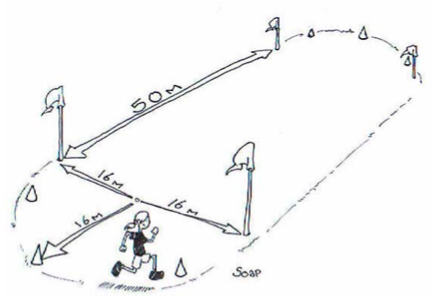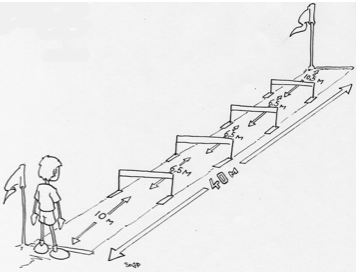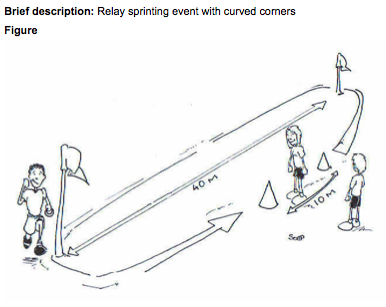Sprinting
Athletics Booklet
Download this fantastic resource that highlights the different aspects that you need to consider when coaching your kids in running, throwing and jumping.
This is a 46 page booklet that covers the main things you need to know when teaching athletics. A great combination of sessions and teaching points.
Sprinting Activities Booklet
Download our Running Booklet to see how you can enthuse your children to work on their long distance and spiriting skills through fun activities. Each activity shows a diagram and gives you a written explanation for you to refer to each time you are teaching athletics.
Click the image to start the download.
Sprint Technique
Teaching points
– Eyes focused on one spot straight ahead – tunnel vision
– Head in line with the spine and held back and still
– Back straight leaning slightly forward not upright
– Elbows at right angles
– Smooth forward-backward action of the arms – not across the body
– Hands and shoulders relaxed – fingers loosely curled letting the air pass through
– High knee lift
– Quiet landing on balls of feet each stride
– Long strides rather than short steps
Treasure Hunter
Create a square area. Place an arc of cones at each corner to allow the team to stand in. Place the children into four teams. Put beanbags in the middle of the square. Only one team member can run at a time. It is a relay to see who can collect the most beanbags. You can create a value for the beanbags depending on what they are learning in numeracy. E.g. make each beanbag worth 3 points, they then calculate their score. You can also add a value to specific coloured beanbags.
Cops and Robbers
Create a square area with a jail in the middle. Using a variety of movements chosen by the teacher, the robbers will avoid the police. If a robber is caught they must complete a balance in jail until they are freed by another robber.
Deep Sea Monsters
Create a square area and place a safe zone at two ends. The ‘Fish’ must run from one safe zone to the other without being caught by the octopus. Once a fish has been caught it turns into seaweed at the place where he/she was caught. They are now seaweed and can only move their arms like seaweed to catch other fish running past. They can not move their feet.
Tails
Set out two lines of children and put them in pairs (similar speed). Line 1 will start in front of their partner and they must have a tail. Line 2 will try to catch their partners before they reach a ‘safe zone’.
Beanbag Sprint
This is another example from our Running Booklet. The children will have a lot of fun with this activity and it encourages the children to better themselves opposed to competing with their peers.
Tennis Chase
This game must be played on a surface on which a ball can roll freely.
Provide each child with a tennis ball and place them in teams. Ensure there is enough room for tennis balls going off course and children don’t run into each other.
Inform the children that they are going to bowl their tennis ball and then chase it. Tell the children to run past the ball, turn, collect it and jog back to their team.
You could also play this game with a partner bowling the ball from behind the runner. This develops reaction skills.
200m Track
Create a 200m track using cones for the children. This is a sprinting activity that develops acceleration and endurance. Time the children and give them a target to aim for.
Sprint Hurdles
The children can have a go at the hurdles. Ensure the children stride without shortening steps (as this decreases speed) to jump the hurdles.
Athletics Booklet
A booklet explaining a variety of sprinting activities when teaching athletics in PE.

